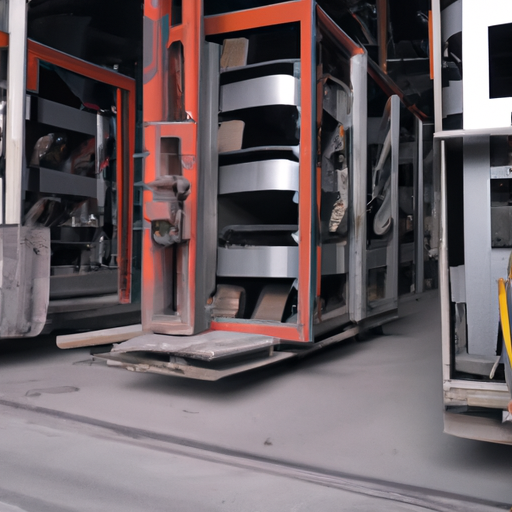-
Table of Contents
- Introduction
- What Are the Latest Technologies Used in NPK Plant Setups?
- What Are the Key Considerations When Setting Up an NPK Plant?
- What Are the Different Types of NPK Plant Setups?
- What Are the Challenges of Setting Up an NPK Plant?
- What Are the Benefits of Setting Up an NPK Plant?
- How to Calculate the Cost of Setting Up an NPK Plant
- Conclusion
“Grow Your Business with NPK Plant Set Up Costing – Get the Right Price for the Right Results!”
Introduction
NPK plant set up costing is an important consideration for any business looking to set up a plant to produce nitrogen, phosphorus, and potassium (NPK) fertilizers. NPK fertilizers are essential for crop production and are used in many agricultural and horticultural applications. The cost of setting up an NPK plant can vary significantly depending on the size and complexity of the plant, the type of equipment used, and the location of the plant. This article will provide an overview of the costs associated with setting up an NPK plant, including the cost of raw materials, labor, and other associated costs. It will also discuss the various factors that can affect the cost of setting up an NPK plant.
What Are the Latest Technologies Used in NPK Plant Setups?

The latest technologies used in NPK plant setups are varied and depend on the specific needs of the plant. Some of the most common technologies used in NPK plant setups include:
1. Automation: Automation is used to reduce labor costs and increase efficiency. Automation can be used to control the production process, monitor the quality of the product, and optimize the use of resources. Automation can also be used to reduce the risk of human error and improve safety.
2. Data Analytics: Data analytics is used to analyze data from the production process and identify areas for improvement. Data analytics can be used to identify trends, identify potential problems, and optimize production processes.
3. Sensors: Sensors are used to monitor the environment and detect changes in the production process. Sensors can be used to detect changes in temperature, humidity, and other environmental factors.
4. Robotics: Robotics is used to automate the production process and reduce labor costs. Robotics can be used to perform repetitive tasks, such as packaging and labeling, and can be programmed to perform more complex tasks.
5. Artificial Intelligence: Artificial intelligence is used to automate decision-making processes and optimize production processes. Artificial intelligence can be used to identify patterns in data and make decisions based on those patterns.
These are just a few of the technologies used in NPK plant setups. As technology advances, more technologies are being developed to improve the efficiency and safety of NPK plant setups.
What Are the Key Considerations When Setting Up an NPK Plant?
When setting up an NPK plant, there are several key considerations to keep in mind. First, it is important to consider the type of NPK plant that is best suited for the particular application. Different types of NPK plants are available, such as granular, liquid, and powder. Each type has its own advantages and disadvantages, so it is important to select the type that is most suitable for the application.
Second, the location of the NPK plant should be carefully considered. The plant should be located in an area that is easily accessible and has adequate space for the necessary equipment. Additionally, the plant should be located in an area that is free from potential hazards, such as flooding or other natural disasters.
Third, the size of the NPK plant should be determined. The size of the plant will depend on the amount of NPK that needs to be produced. It is important to ensure that the plant is large enough to meet the production needs, but not so large that it is inefficient.
Fourth, the type of raw materials used in the NPK plant should be considered. Different types of raw materials can be used, such as fertilizer, manure, and other organic materials. It is important to select the type of raw materials that are most suitable for the application.
Finally, the safety of the NPK plant should be taken into consideration. The plant should be designed and operated in a manner that minimizes the risk of accidents and injuries. Additionally, the plant should be regularly inspected and maintained to ensure that it is operating safely and efficiently.
By taking these key considerations into account, it is possible to set up an NPK plant that is safe, efficient, and cost-effective.
What Are the Different Types of NPK Plant Setups?
NPK plant setups are a type of fertilizer production facility that produces a combination of nitrogen, phosphorus, and potassium (NPK) for use in agricultural and horticultural applications. There are several different types of NPK plant setups, each with its own advantages and disadvantages.
The most common type of NPK plant setup is the batch process. This process involves mixing the three components in a large tank and then allowing them to react and form a homogenous solution. This solution is then filtered and packaged for sale. The advantage of this process is that it is relatively simple and cost-effective. However, it is not as efficient as other processes and can produce inconsistent results.
Another type of NPK plant setup is the continuous process. This process involves continuously mixing the three components in a large tank and then allowing them to react and form a homogenous solution. This solution is then filtered and packaged for sale. The advantage of this process is that it is more efficient than the batch process and produces more consistent results. However, it is more expensive and requires more complex equipment.
Finally, there is the spray-dried process. This process involves spraying the three components onto a substrate, such as sawdust or clay, and then allowing them to react and form a homogenous solution. This solution is then filtered and packaged for sale. The advantage of this process is that it is more efficient than the batch process and produces more consistent results. However, it is more expensive and requires more complex equipment.
No matter which type of NPK plant setup is chosen, it is important to ensure that the components are properly mixed and that the resulting solution is of the highest quality. This will ensure that the fertilizer produced is of the highest quality and will provide the best results for agricultural and horticultural applications.
What Are the Challenges of Setting Up an NPK Plant?
Setting up an NPK plant can be a complex and challenging process. NPK stands for nitrogen, phosphorus, and potassium, and these are essential nutrients for plant growth. An NPK plant is a facility that produces fertilizer containing these three elements.
The first challenge of setting up an NPK plant is obtaining the necessary raw materials. These materials include nitrogen, phosphorus, and potassium, as well as other minerals and chemicals. These materials must be sourced from reliable suppliers and must meet the required quality standards.
The second challenge is the design and construction of the plant. The plant must be designed to meet the specific needs of the customer and must be able to produce the desired fertilizer in the required quantity. The plant must also be designed to meet safety and environmental regulations.
The third challenge is the installation and commissioning of the plant. This involves the installation of the necessary equipment and the testing of the plant to ensure that it is operating correctly.
The fourth challenge is the operation and maintenance of the plant. This involves the regular monitoring of the plant to ensure that it is producing the desired fertilizer in the required quantity and quality. It also involves the regular maintenance of the plant to ensure that it is operating safely and efficiently.
Finally, the fifth challenge is the marketing and distribution of the fertilizer produced by the plant. This involves the promotion of the fertilizer to potential customers and the distribution of the fertilizer to the customers.
Setting up an NPK plant can be a complex and challenging process. However, with careful planning and the right resources, it can be a successful venture.
What Are the Benefits of Setting Up an NPK Plant?
Setting up an NPK plant can provide numerous benefits to businesses and organizations. NPK stands for nitrogen, phosphorus, and potassium, and these are essential nutrients for plant growth. An NPK plant is a facility that produces fertilizer containing these three elements. Here are some of the advantages of setting up an NPK plant:
1. Cost Savings: An NPK plant can help businesses and organizations save money by producing their own fertilizer. This eliminates the need to purchase expensive commercial fertilizers, which can be costly.
2. Improved Soil Quality: An NPK plant can help improve soil quality by providing the necessary nutrients for plants to grow. This can help increase crop yields and improve the overall health of the soil.
3. Reduced Environmental Impact: An NPK plant can help reduce the environmental impact of fertilizer production. By producing fertilizer on-site, businesses and organizations can reduce their carbon footprint and help protect the environment.
4. Increased Productivity: An NPK plant can help increase productivity by providing a steady supply of fertilizer. This can help businesses and organizations maximize their crop yields and increase their profits.
Overall, setting up an NPK plant can provide numerous benefits to businesses and organizations. By producing their own fertilizer, businesses and organizations can save money, improve soil quality, reduce their environmental impact, and increase their productivity.
How to Calculate the Cost of Setting Up an NPK Plant
The cost of setting up an NPK plant depends on a variety of factors, including the size of the plant, the type of equipment used, and the location of the plant. To accurately calculate the cost of setting up an NPK plant, it is important to consider all of these factors.
First, the size of the plant must be determined. The size of the plant will determine the amount of equipment needed, as well as the amount of space required. The larger the plant, the more expensive it will be to set up.
Second, the type of equipment used must be considered. Different types of equipment will have different costs associated with them. For example, a large-scale NPK plant may require more expensive equipment than a smaller-scale plant.
Third, the location of the plant must be taken into account. The cost of setting up an NPK plant in a rural area may be significantly lower than in an urban area due to the cost of land and other infrastructure.
Finally, the cost of labor must be taken into consideration. The cost of labor will vary depending on the type of labor needed and the location of the plant.
Once all of these factors have been taken into account, the cost of setting up an NPK plant can be accurately calculated. It is important to consider all of these factors in order to ensure that the cost of setting up an NPK plant is as low as possible.
Conclusion
The cost of setting up an NPK plant can vary greatly depending on the size and complexity of the plant. However, it is important to consider the long-term benefits of having an NPK plant in place, such as increased production, improved quality, and reduced costs. With careful planning and research, it is possible to set up an NPK plant that meets the needs of the business and provides a good return on investment.

